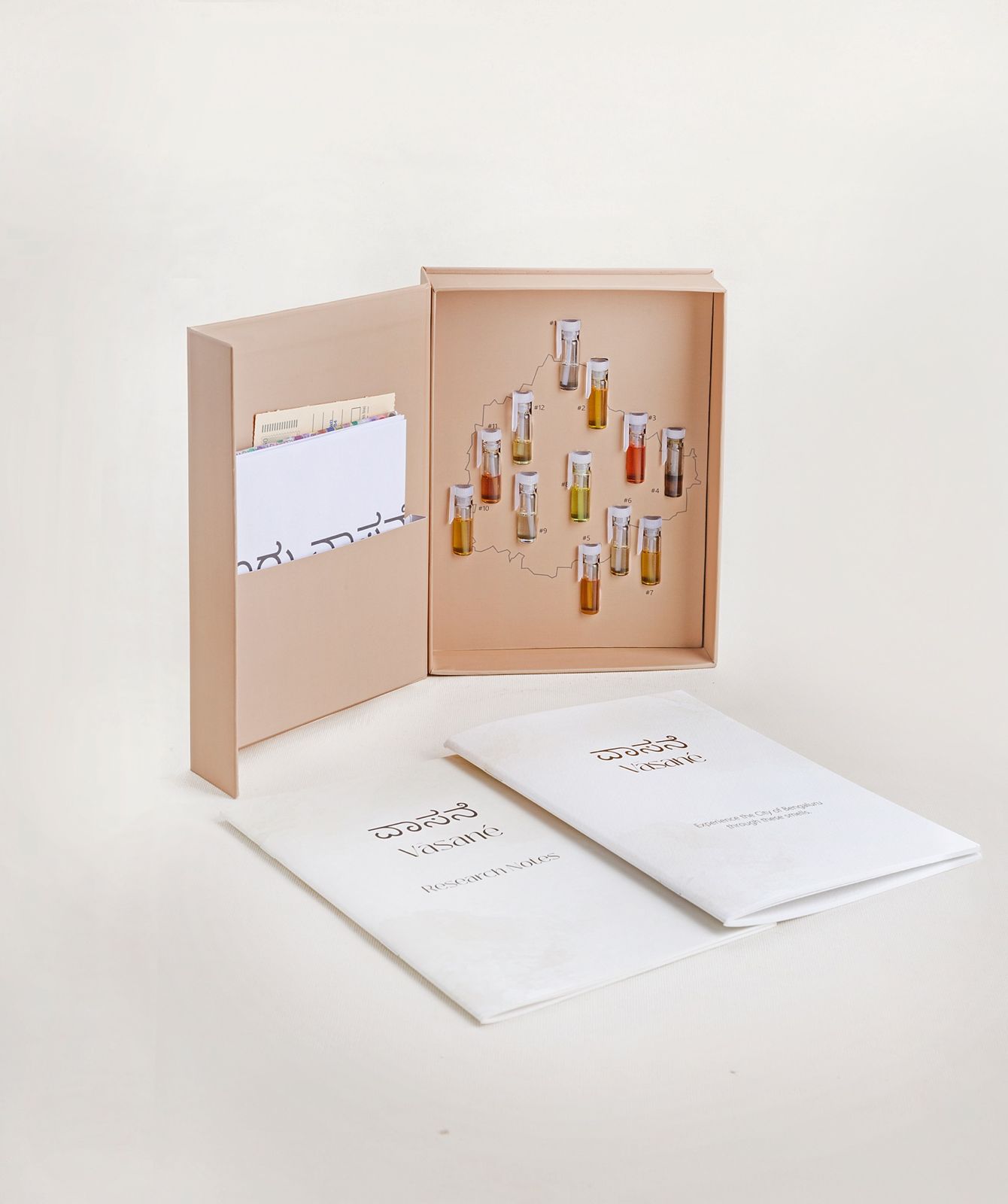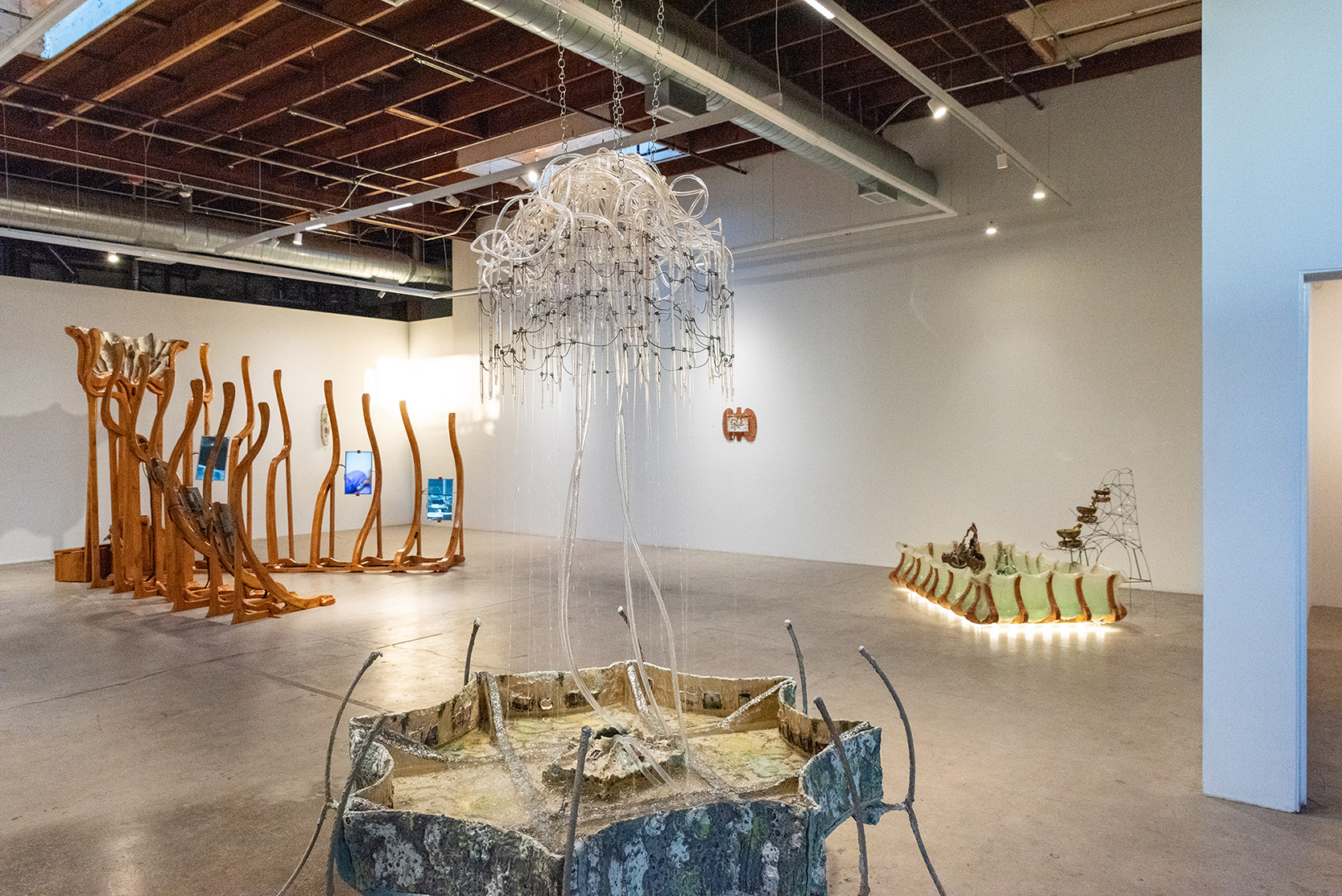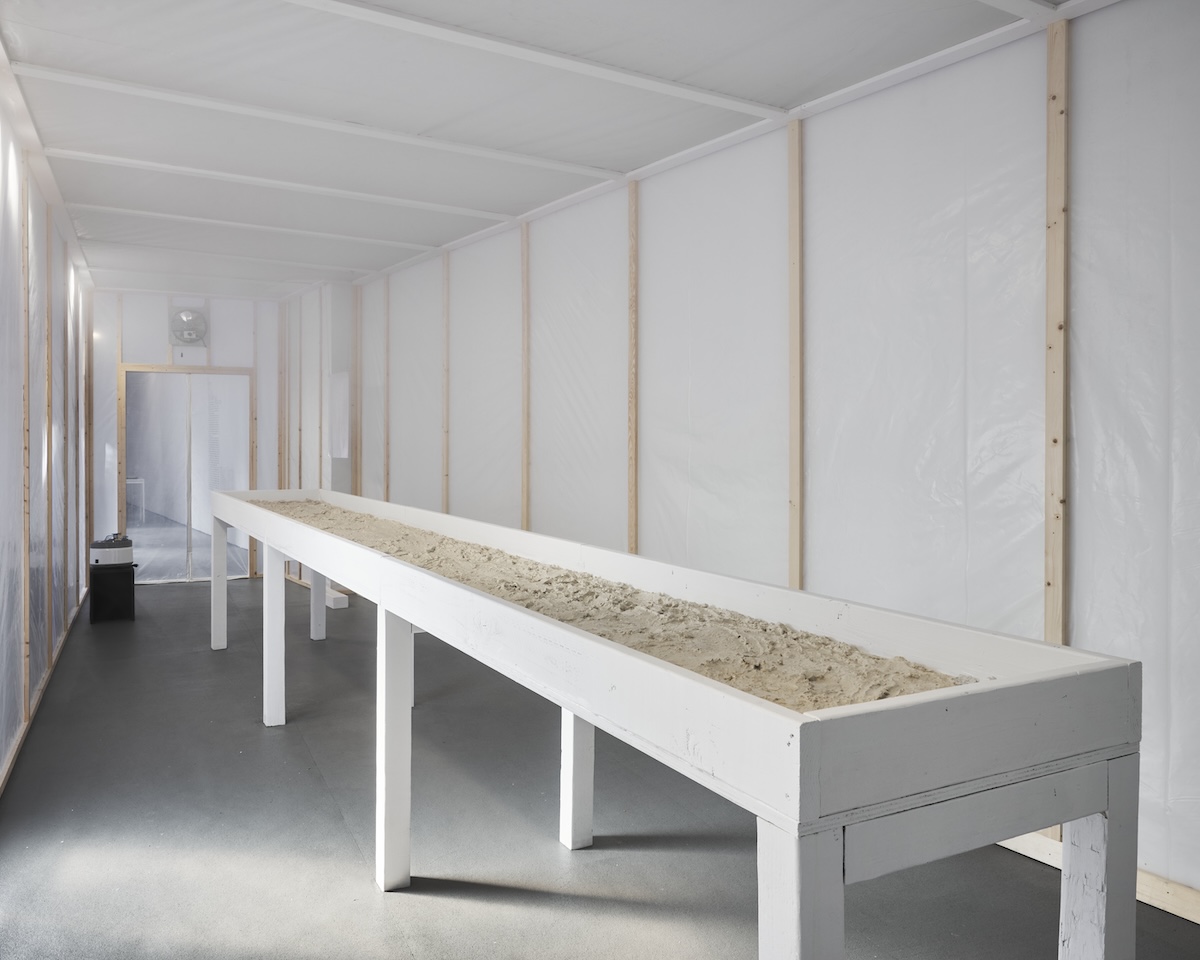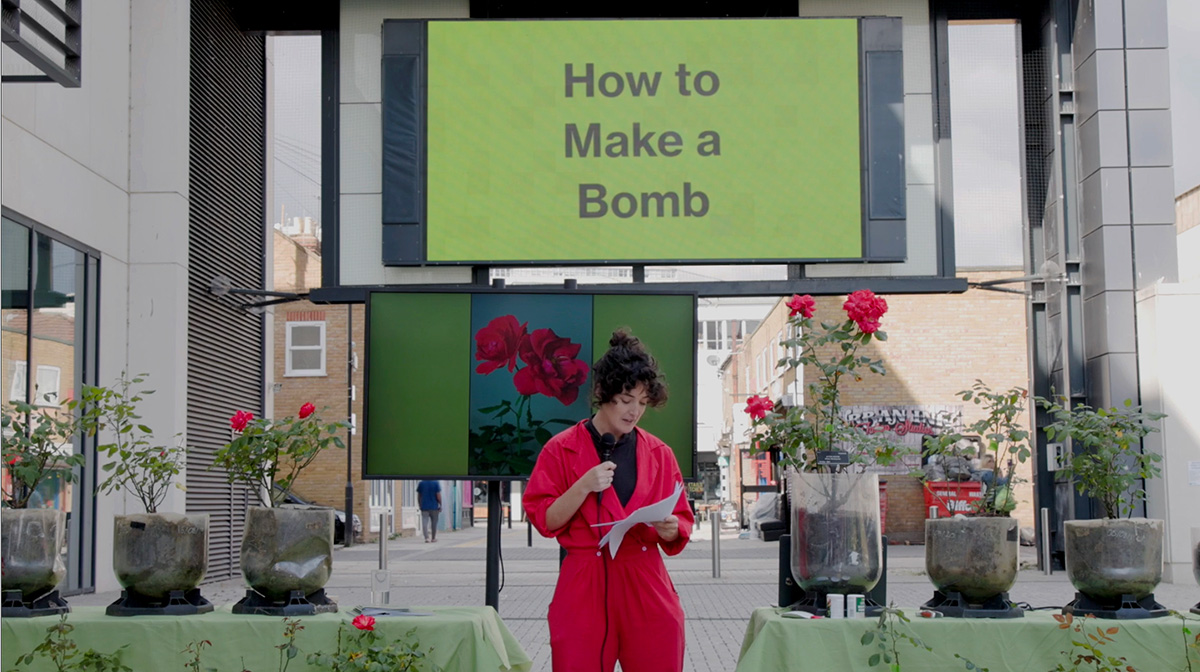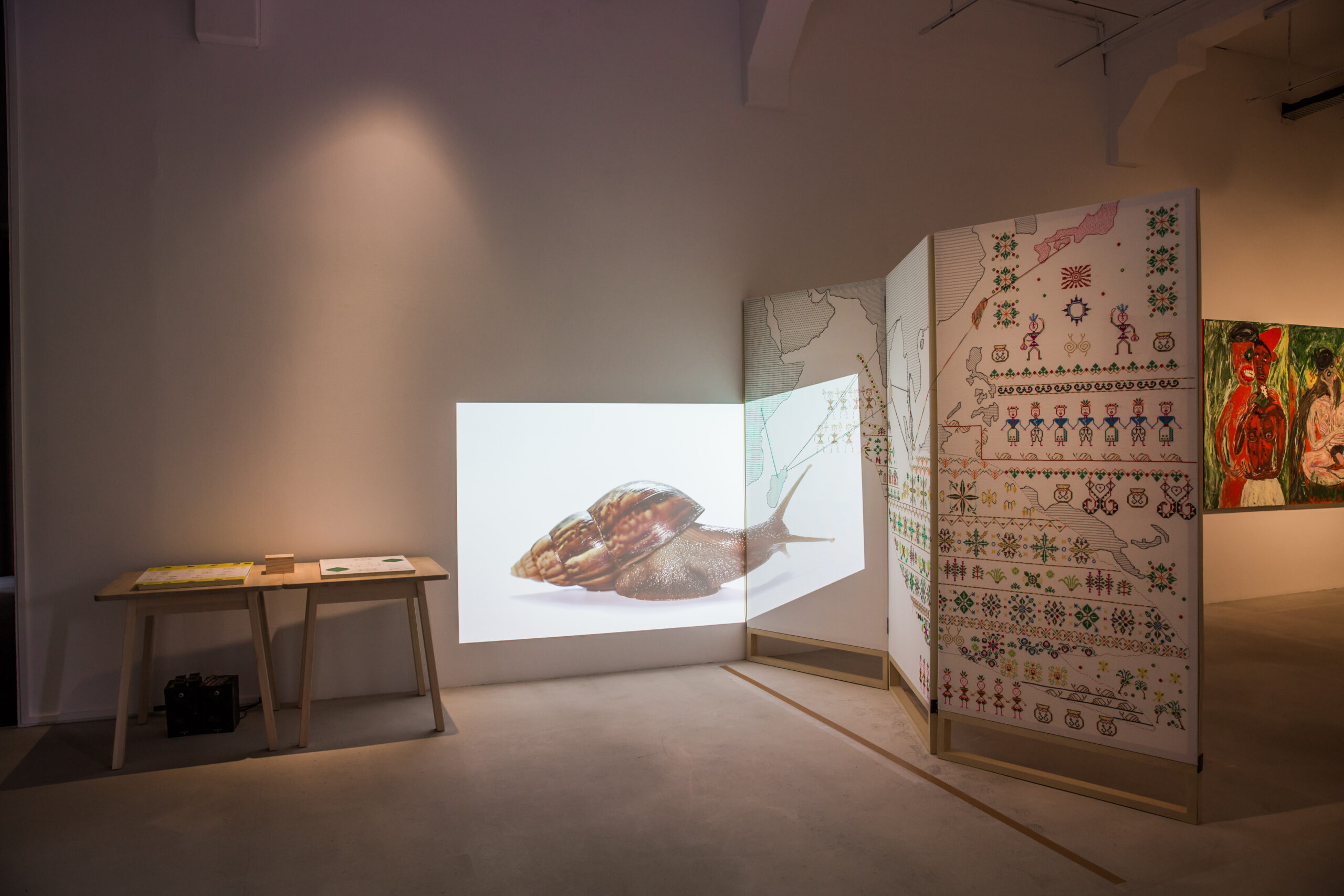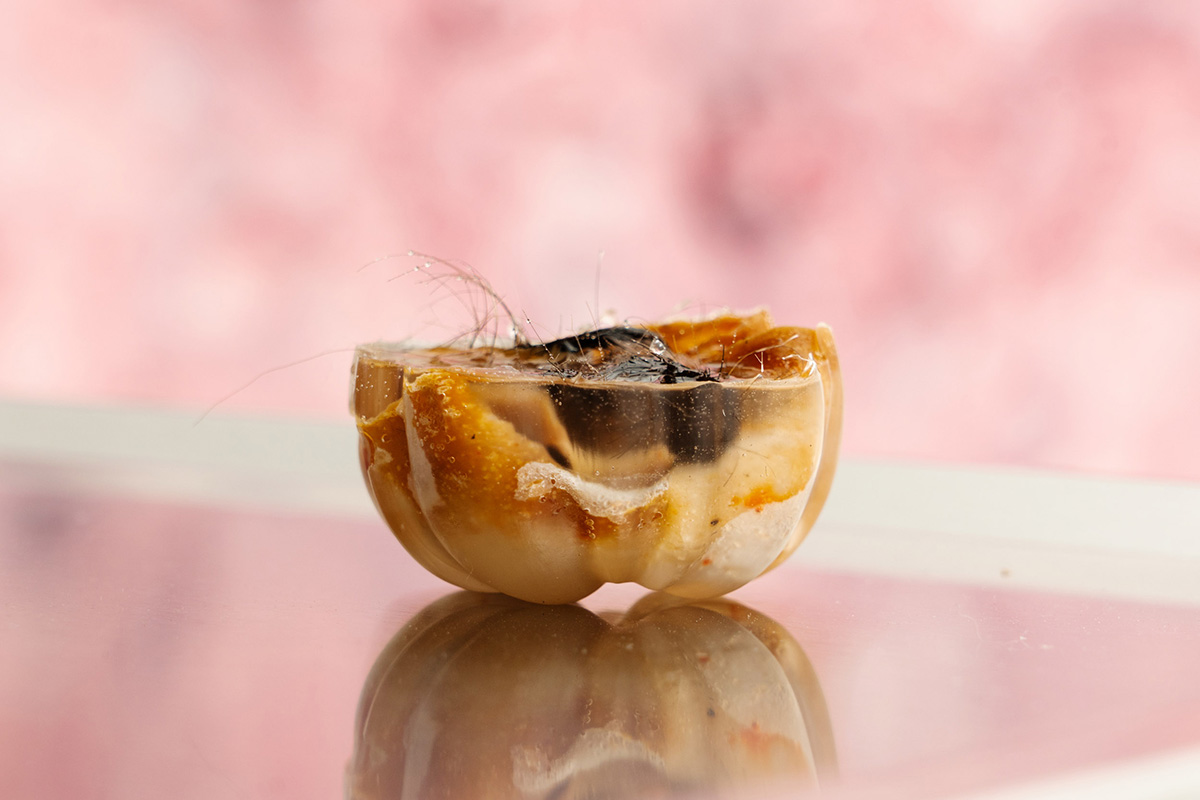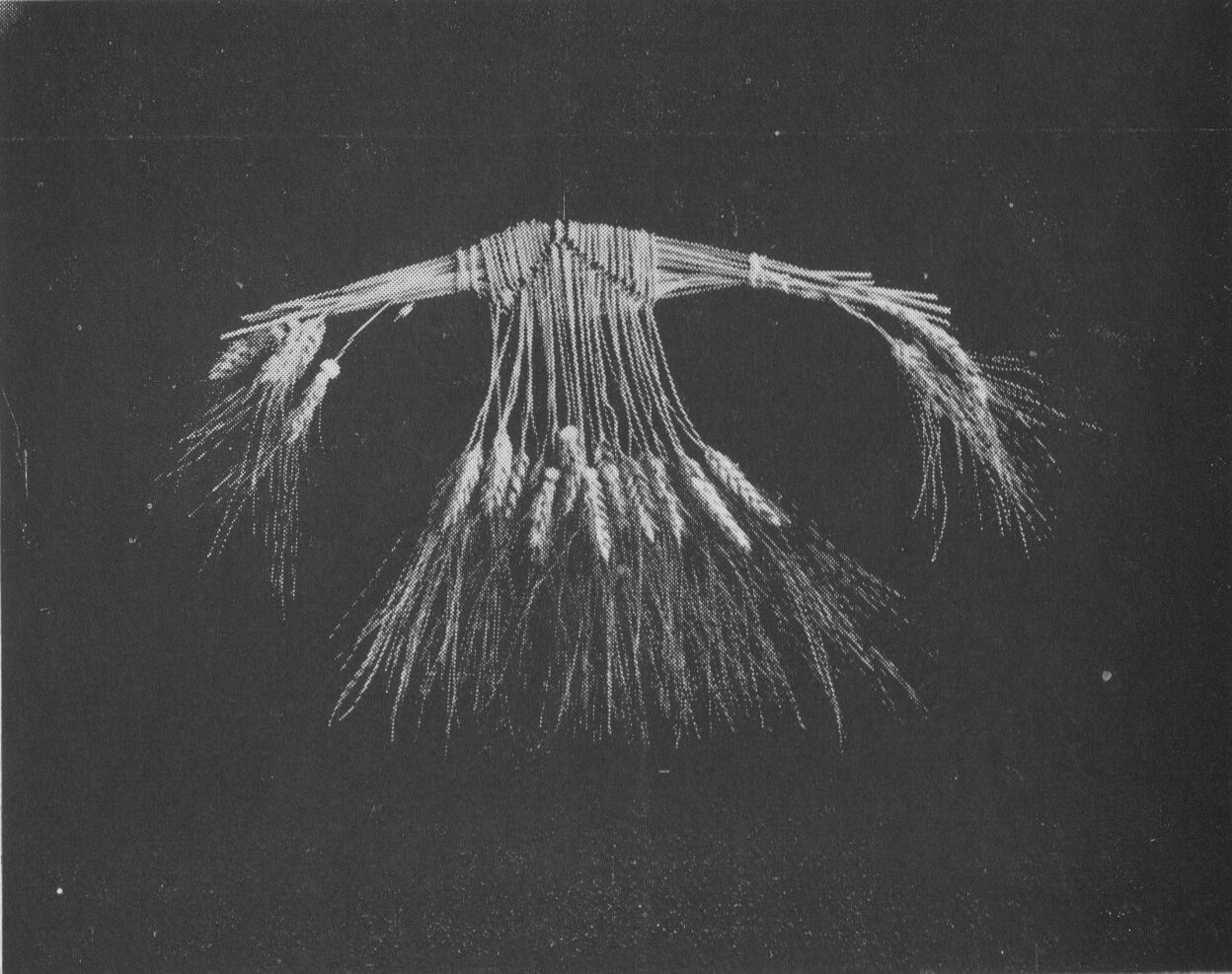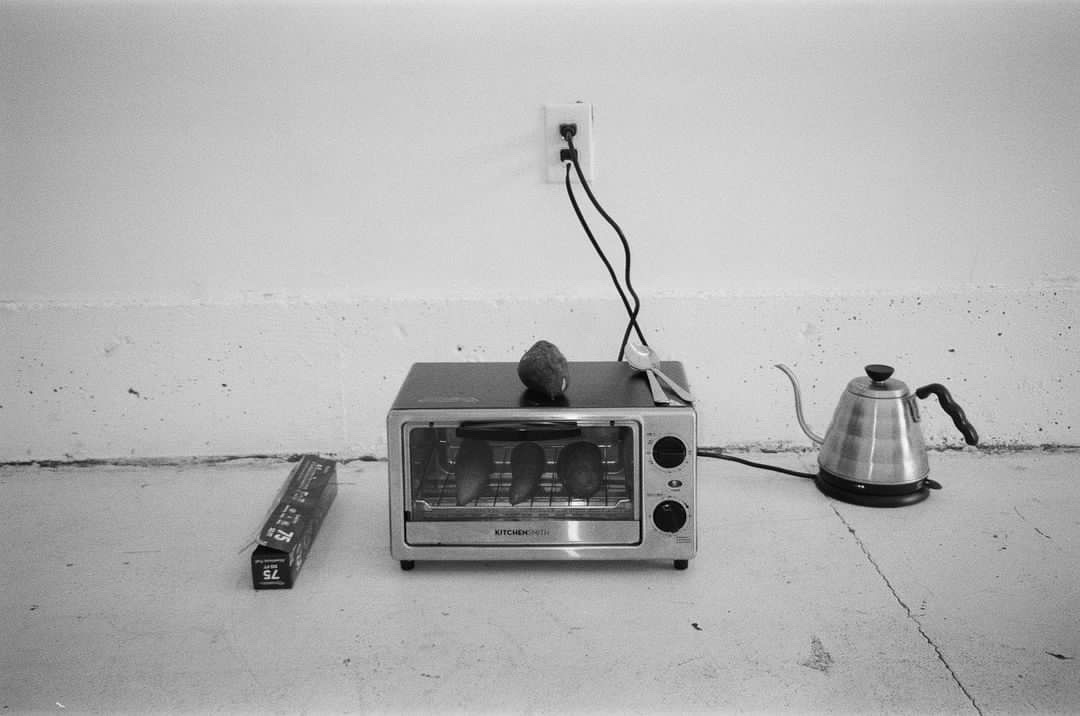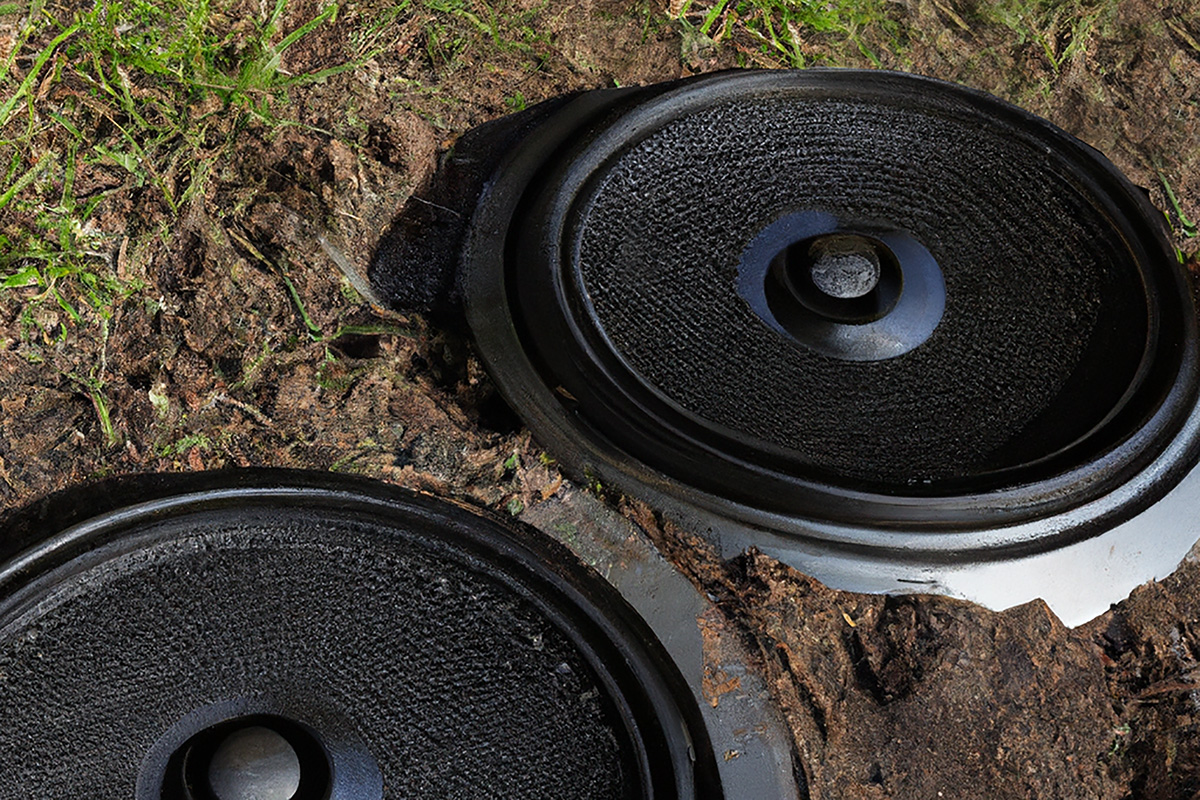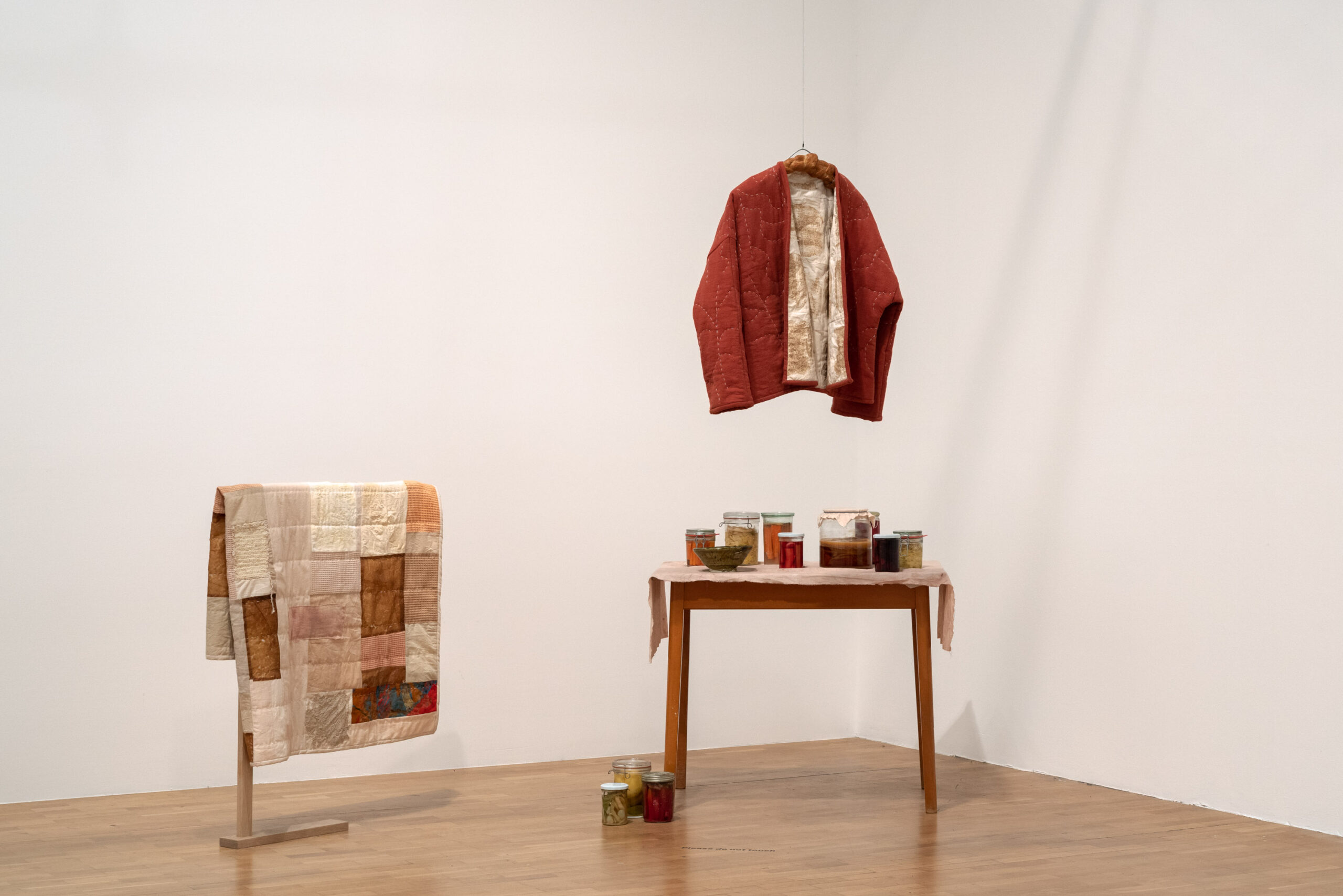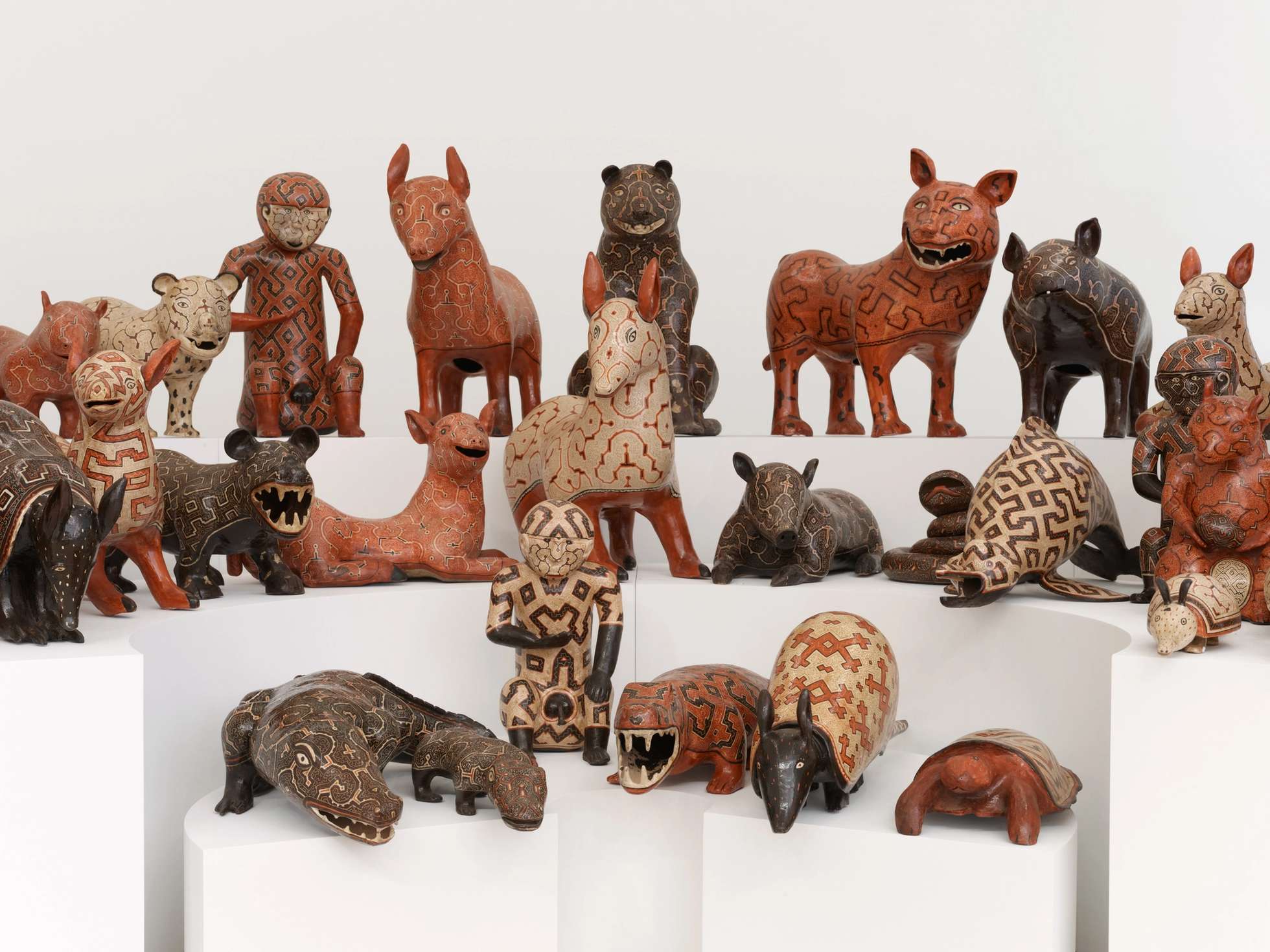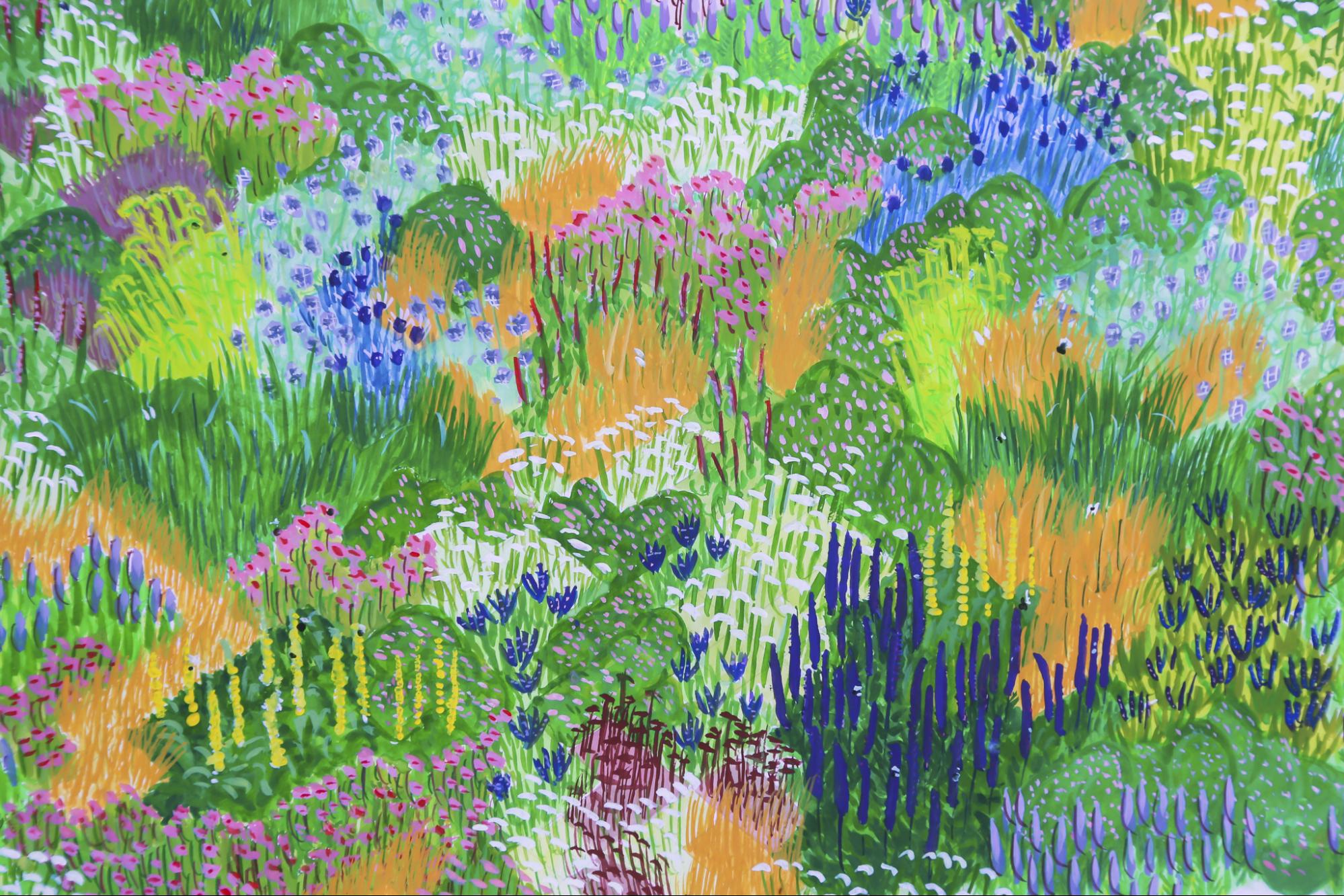A church is hardly the expected home to one of New York City’s most expansive contemporary installations of food-related art. Under stone archways and gothic chandeliers, a vast and comprehensive collection of art—encompassing ideas about sustainability, consumption and food security—snakes around the perimeter of the Cathedral of Saint John the Divine in the city’s Upper West Side. Glowing purple LED lights eerily illuminate a sculpture of edible plants, and a neon script flashes: “who cooked the last supper?” Invoking themes ranging from feminism to labor justice, the six-month show, entitled The Value of Food, seeks to explore food issues in an accessible format for the general public.
“Art should participate with the community,” says Robin Kahn, who co-curated the exhibit with her husband, Kirby Gookin, “and we aimed to have work that speaks to people on a personal level…and that can be used as a resource.” Work from over 30 artists covers the walls, altars, and enclaves of the massive cathedral, organized in a narrative that takes viewers from seed to table. Here are some of the highlights from the show’s opening months.
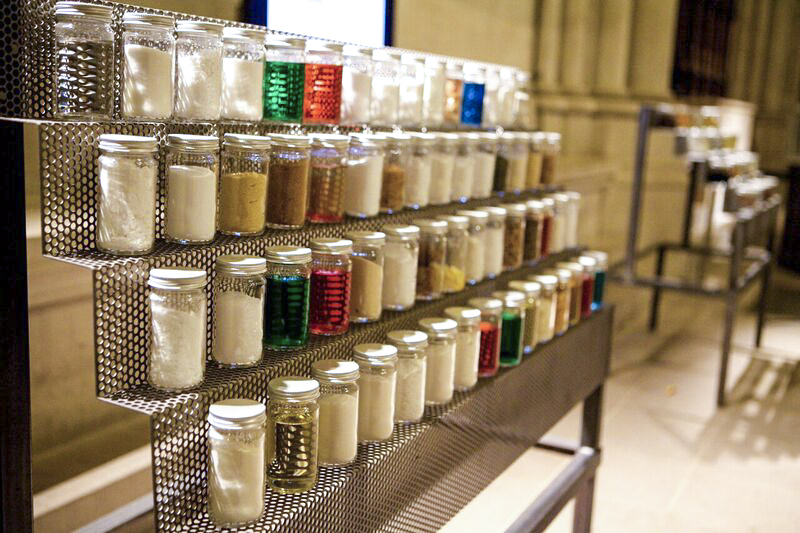 Stefani Bardin’s “M2A (Mouth to Anus): The Fantastic Voyage”. Photo by Helena Kubicka de Bragança/Courtesy Cathedral of St. John the Divine
Stefani Bardin’s “M2A (Mouth to Anus): The Fantastic Voyage”. Photo by Helena Kubicka de Bragança/Courtesy Cathedral of St. John the Divine
Gastroenterology as art
Artist Stefani Bardin speaks to food issues by way of science and technology. In this instance, she recruited the help of Dr. Brandon Kuo from Harvard to investigate what happens when we digest homemade versus processed foods. Using capsule endoscopy, they recorded the digestion of two meals: one of processed ramen noodle soup, gummi bears and gatorade, and the other of those same foods made from scratch. The first video shows the recognizable but somewhat unsettling outline of ramen noodles and electric blue Gatorade, churning in a stomach for hours, while the other shows foods quickly digested into charming stomach mush. It’s hard to ignore the stark reality of what happens to the comestibles we put in our bodies. Accompanying the videos are two sets of tiered shelves, reminiscent of Catholic votive stands, which display ingredients that comprise the two meals. Their austere display speaks for itself—what are you comfortable with consuming?
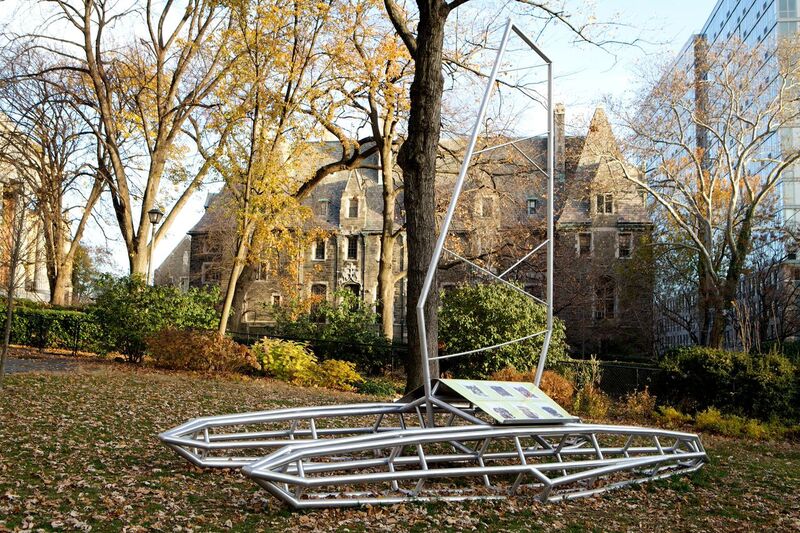 Tattfoo Tan’s “NEKKA (New Earth Apocalypse Advancement Unit)”. Photo by Helena Kubicka de Bragança/Courtesy Cathedral of St. John the Divine
Tattfoo Tan’s “NEKKA (New Earth Apocalypse Advancement Unit)”. Photo by Helena Kubicka de Bragança/Courtesy Cathedral of St. John the Divine
Food package design meets apocalyptic disaster prep
In a two-part installation comprised of a metal key-frame catamaran, disaster meal plans and dehydrated food products, artist Tattfoo Tan envisions how we may cope with food scarcity and security issues. Dehydrated fried rice with beans, apple sauce prosciutto, and potato curry are vacuum sealed and packed into crates; Images of “ugly” produce (misshapen carrots and potatoes that are currently often wasted in our food systems) are projected against the wall. His piece presents a keen reminder of our uncertain future, due to issues surrounding climate change, agriculture, water, and population growth. It’s a satisfyingly provocative combination of clever food packaging design, sculpture, and a bit of dystopian theater.
Color theory, as applied to pickles
For those of us with a design background, we know well the power of color to attract people to a concept or idea. Let Us Us Eat the Colors of Nature’s Spectrum, a pickles-meets-palette installation by Linda Weintraub, harnesses the appeal of graduating colors to showcase the variety of foods available in nature. Jars of pickled fruit and vegetables line the top of a lofty stone wall in one of the church’s enclaves, fading from red to orange, and yellow to green. Her display of pickled hues from nature inspires awe for the humble preserved produce, and perhaps deepens our food and the environment as a whole.
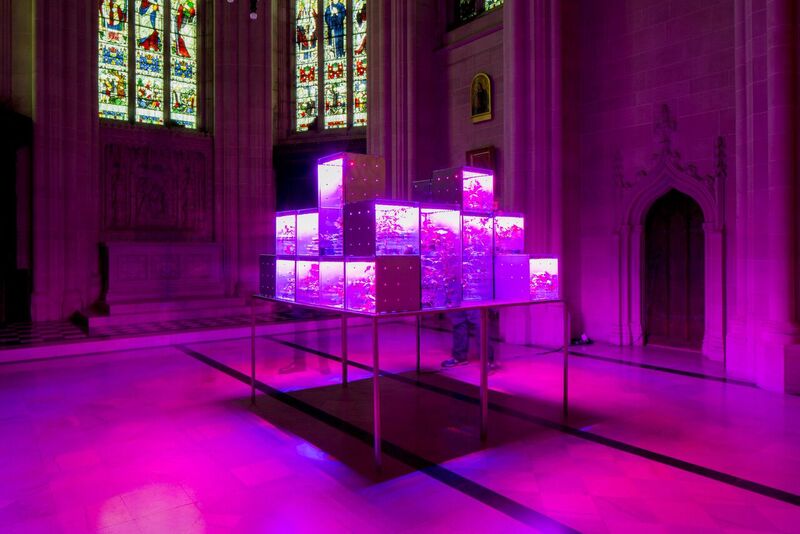 Suzanne Anker’s “Astroculture (Shelf Life)”. Photo by Raul Valverde
Suzanne Anker’s “Astroculture (Shelf Life)”. Photo by Raul Valverde
Purple plants are the way of the future
At first glance, the plants inside Suzanne Anker’s glowing structure of purple lightboxes don’t seem real—they look grey and counterfeit under surreal LED lights. But the edible herbs inside, including basil and cilantro, are alive and edible. Her piece, Astroculture (Shelf Life), was inspired by work at NASA done in 2001 investigating ways to grow vegetables in space. Blue and red LED lights actually provide the spectrum necessary for photosynthesis, and Anker decided to use the technology an artistic object. The piece confronts our expectations that plants have to appear green to be growing, and speaks to the possibilities of urban farming and sustainable agriculture solutions.
Art can take an any form—even that of beans. Perhaps especially beans.
Alison Knowles, a prolific and influential Fluxus artist since the 1960s, is responsible for the exhibit’s rather elaborate collection of invented artifacts and love notes all dedicated to a common pantry staple: beans. Her installation includes objects made out of beans, poems about beans, drawings and musical compositions of beans, bean-inspired needlepoint, and even a giant tray of white navy beans to guests to play in. When asked why she chose that varietal, the artist replied: “White navy beans are the most common type of bean. Isn’t that wonderful?” Her affinity for the common and the everyday is represented by an affectionate collection of invented artifacts and love notes, all intended to remind us that we can make art of out anything. “Personal knowledge of food is empowering,” says Kahn, “And sometimes the most common thing, beans, can be spectacular.”
The Value of Food is on view now through April 3, 2016 at Saint John the Divine Cathedral in New York City.
